by Lisa Cooke | Feb 13, 2017 | 01 What's New, DNA |
The genetic genealogy community has a crush. A big one. Everyone is talking about it. “It has such great features,” says one. “It has a chromosome browser!” exclaims another. “It’s FREE!” they all shout. What’s all the hype about? GEDmatch.
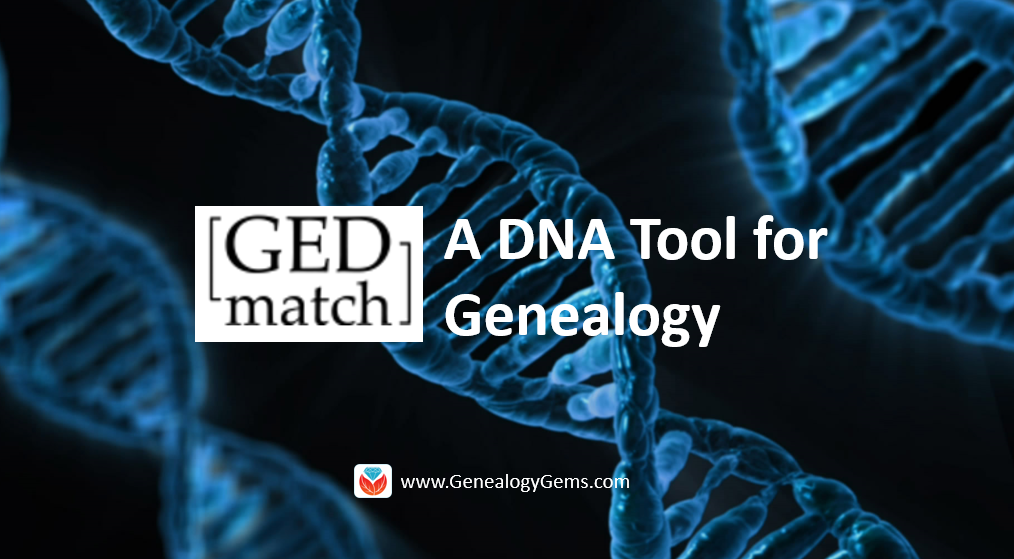
GEDmatch is a mostly free online tool where anyone with autosomal DNA test results from 23andMe, FTDNA, and AncestryDNA can meet and share information. All you need to do is download your data from your testing company and upload it into your newly created GEDmatch account.
GEDmatch Set-up
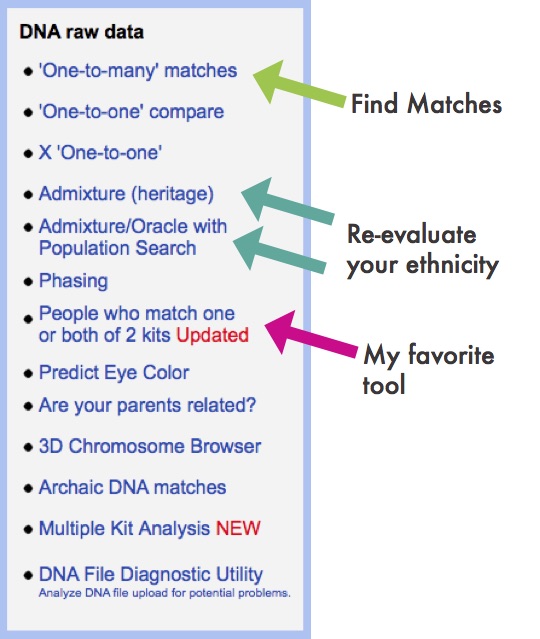
Gedmatch Find Matches
GEDmatch is set up just like your testing company and provides two kinds of reports: ethnicity results and a match list. Remember, ethnicity results, meaning those pie charts that report you are 15% Italian and 32% Irish, are based on two factors: a reference population and fancy math. GEDmatch has gathered data from multiple academic sources to provide you with several different iterations of ethnicity reports. This is like getting a second (and third and fourth, etc) opinion on a science that is still emerging. It is a fun exercise, but will likely not impact your genealogy research very much.
The more important match list does allow you to see genetic cousins who have tested at other companies. Of course, only those who have downloaded their results and entered them into GEDmatch will show up on your list. This means GEDmatch has the potential to expand your pool of genetic cousins, increasing your chances of finding someone to help you track down that missing ancestor.
Many also flock to GEDmatch because they were tested at AncestryDNA and so do not have access to a chromosome browser. A chromosome browser allows you to visualize the physical locations that you share with someone else (see below). Some find this a helpful tool when analyzing their DNA matches, though in my opinion, it is not essential.

Example
GEDmatch also has some great genealogy features that let you analyze your pedigree against someone else’s, as well as the ability to search all the pedigree charts in their system so you can look specifically for a descendant of a particular relative. However, even with all of these great features, GEDmatch is still yet another website you have to navigate. With that, there will be a learning curve and certainly some frustration.
GEDMatch or Not?
So, is it worth it? If you are fairly comfortable with the website where you were tested, and you are feeling both curious and patient, I say go for it!
It’s too much to tell you right this minute how to download your data from your testing site and upload it to GEDmatch, but you’re in luck! I’ve put step-by-step instructions for getting started in a free tutorial on my website at www.yourDNAguide.com/transferring.
by Lisa Cooke | Dec 17, 2013 | 01 What's New, Video
According to Jan Langer, there are said to be over 700 people over the age of 100 living int he Czech republic. Langer “wondered what changes and what remains on a human face and in a human mind in such a long time, and in such a short while in relative terms. I wondered how much loneliness of the old age weighs, and what memories stay in 100-year-old mind.”
In this riveting time lapse video, Langer explores the similarities and the differences in appearance and in physiognomy over 100 years. He used comparative photos (archive portraits from family albums and contemporary portraits) to bring the faces through time. Personally I find the old faces as captivating as the young.
Though characteristics of personality change over time, Langer says it “seems as if individual nature remains rooted in the abyss of time.”
The series was created as a part of a project for Aktualne.cz.
More information can be found at www.fotojatka.cz
Like this? Please share it using our social media buttons.
by | Feb 3, 2014 | 01 What's New, Google, Photographs
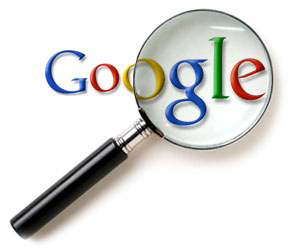 Do you have old pictures but aren’t sure where they were taken? Sometimes Google Earth has the answer. Check out this question from podcast listener Dennis:
Do you have old pictures but aren’t sure where they were taken? Sometimes Google Earth has the answer. Check out this question from podcast listener Dennis:
Q: “I am scanning slides from my only trip to my ancestor’s home in rural Germany and don’t recall the names or locations of a few people. The clue hear is ‘slides’. They were taken in 1986! I have a question regarding something I thought I heard on one of your podcasts regarding identifying a building via a picture that is uploaded to a web site. Can you give me some help with this?”
A: Yes! On my website, I offer a FREE video in which I demonstrate how to identify a building in an old photo using Google Earth. You can watch the free video by going to www.GenealogyGems.com, hover your mouse over VIDEO, and click on Google Earth for Genealogy in the drop down menu.
Another option is to use the free Google app on your smart phone or tablet. Open the app, tap in the search box, tap the Camera icon, and take a photo of the photo you have that contains the building you want to identify. (This works best with more well known locations.) It’s a long shot, but you never know – Google just may be able to identify it.
 Good luck, Dennis–and all the rest of you out there who are puzzling over how to identify old photos’ locations.
Good luck, Dennis–and all the rest of you out there who are puzzling over how to identify old photos’ locations.
Find more tips on using Google Earth for Genealogy in my popular Google Earth for Genealogy 2-Disk Bundle. The free video is just the beginning of what you can do with Google Earth!
by Lisa Cooke | Oct 20, 2016 | 01 What's New, RootsTech |
RootsTech 2017 is already wowing us with their recent announcement of Friday’s keynote speaker, LaVar Burton. Not just known for favorites like Reading Rainbow and Star Trek: The Next Generation, LaVar has been known by millions for his role as Kunta Kinte the 1977, ABC mini series, Roots.
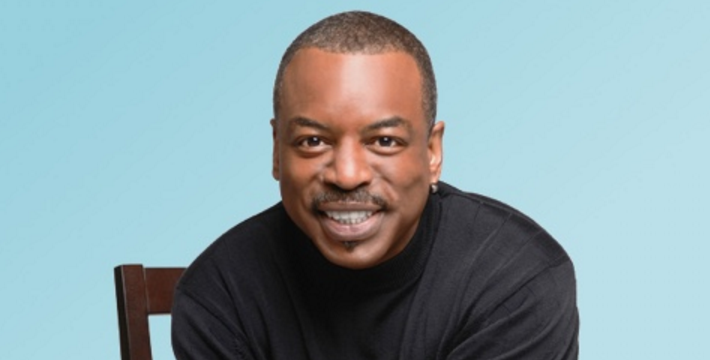
I can hardly wait until Friday, February 10th, 2017 when LaVar Burton is introduced on stage as a keynote speaker at RootsTech! One of my childhood favorites, I grew up listening to him share his love of reading in Reading Rainbow and teaching his best friend, Data, how to be more ‘human’ in the popular TV show, Star Trek: The Next Generation.
Mr. Burton is excited about the opportunity to speak at RootsTech where he plans to share personal stories about Roots, Star Trek, and his Reading Rainbow foundation. He also plans on sharing stories of his mom and her commanding influence on him. He says,
“The story of Roots traces a family’s journey from Africa to America and back. At RootsTech, I’ll share some of my own journey of family, storytelling and the influence of African culture on my American Experience.”
RootsTech Keynote Speakers and More
L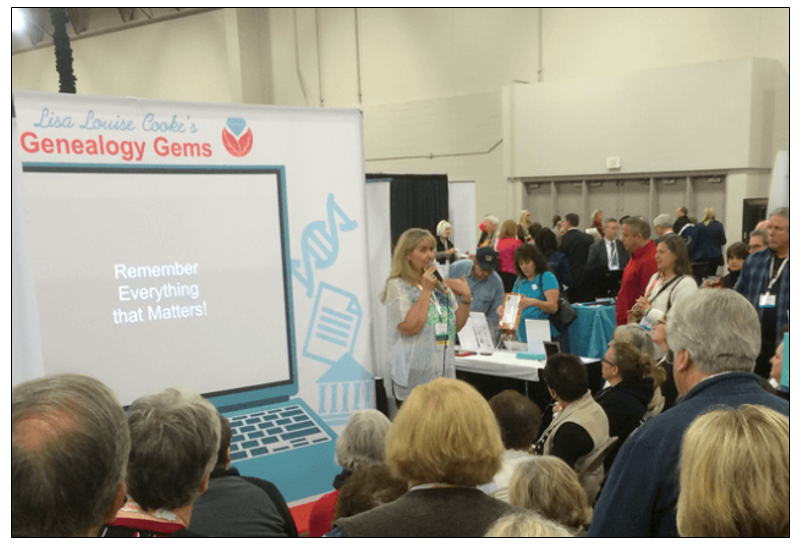 aVar Burton is the first RootsTech Keynote Speaker to be announced for 2017. More speakers will be announced over the coming weeks.
aVar Burton is the first RootsTech Keynote Speaker to be announced for 2017. More speakers will be announced over the coming weeks.
If you haven’t heard, registration has already started for the RootsTech genealogy conference in Salt Lake City. Visit www.rootstech.org to register or learn more.
Be sure to come by and visit the entire Genealogy Gems team in the Expo Hall. We have some very special things planned for the event. Stay tuned!







 aVar Burton is the first RootsTech Keynote Speaker to be announced for 2017. More speakers will be announced over the coming weeks.
aVar Burton is the first RootsTech Keynote Speaker to be announced for 2017. More speakers will be announced over the coming weeks.